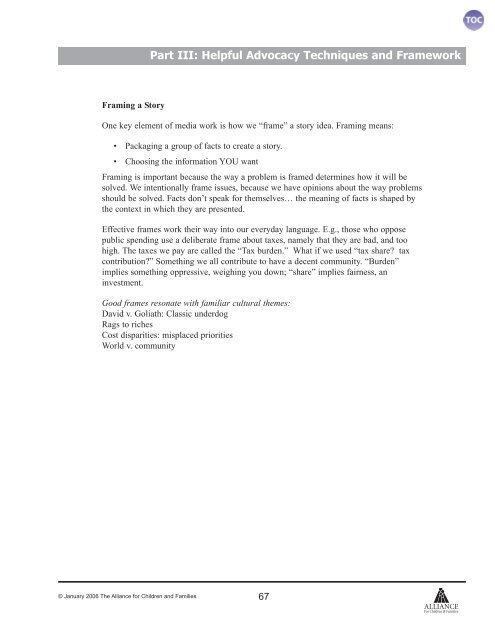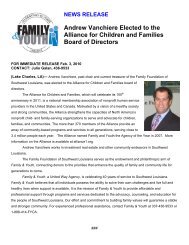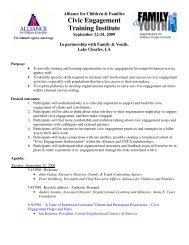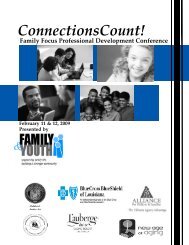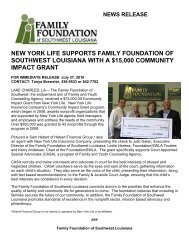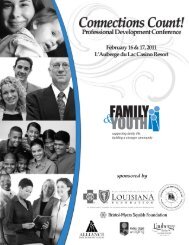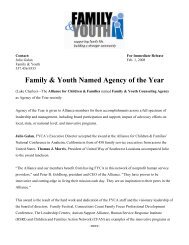Mission-based Advocacy Toolkit from Alliance for Children & Families
Mission-based Advocacy Toolkit from Alliance for Children & Families
Mission-based Advocacy Toolkit from Alliance for Children & Families
You also want an ePaper? Increase the reach of your titles
YUMPU automatically turns print PDFs into web optimized ePapers that Google loves.
Framing a Story<br />
Part III: Helpful <strong>Advocacy</strong> Techniques and Framework<br />
One key element of media work is how we “frame” a story idea. Framing means:<br />
• Packaging a group of facts to create a story.<br />
• Choosing the in<strong>for</strong>mation YOU want<br />
Framing is important because the way a problem is framed determines how it will be<br />
solved. We intentionally frame issues, because we have opinions about the way problems<br />
should be solved. Facts don’t speak <strong>for</strong> themselves… the meaning of facts is shaped by<br />
the context in which they are presented.<br />
Effective frames work their way into our everyday language. E.g., those who oppose<br />
public spending use a deliberate frame about taxes, namely that they are bad, and too<br />
high. The taxes we pay are called the “Tax burden.” What if we used “tax share? tax<br />
contribution?” Something we all contribute to have a decent community. “Burden”<br />
implies something oppressive, weighing you down; “share” implies fairness, an<br />
investment.<br />
Good frames resonate with familiar cultural themes:<br />
David v. Goliath: Classic underdog<br />
Rags to riches<br />
Cost disparities: misplaced priorities<br />
World v. community<br />
© January 2006 The <strong>Alliance</strong> <strong>for</strong> <strong>Children</strong> and <strong>Families</strong> 67


